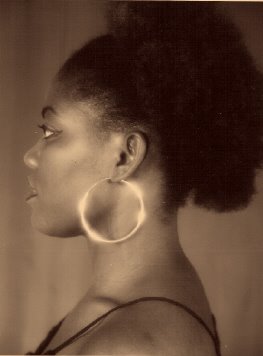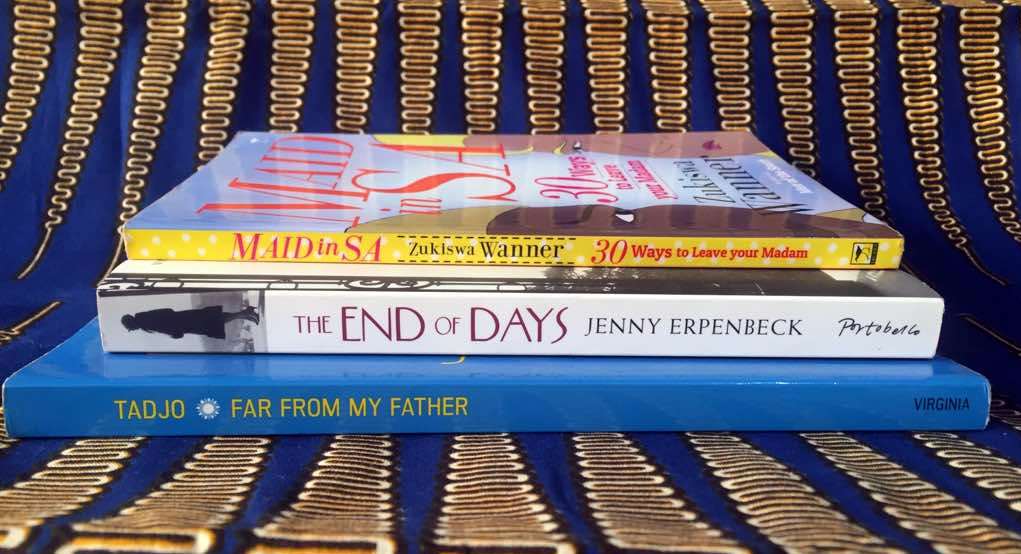 Nawal El Saadawi is the Spotlight Writer for the new issue of the SABLE Litmag of New Writing - out now. The 142-page publication includes an extract from Sefi Atta's second novel, Swallow, to be published by Farafina in December. There's plenty of fiction, poetry, interviews, reviews, columns - and an essay on Gambian Women's Voices by Rosamond S. King. The Fulbright Scholar was at the Sable Litfest in The Gambia in July.
Nawal El Saadawi is the Spotlight Writer for the new issue of the SABLE Litmag of New Writing - out now. The 142-page publication includes an extract from Sefi Atta's second novel, Swallow, to be published by Farafina in December. There's plenty of fiction, poetry, interviews, reviews, columns - and an essay on Gambian Women's Voices by Rosamond S. King. The Fulbright Scholar was at the Sable Litfest in The Gambia in July. Excerpt from Rosamond S. King's essay, as presented at the Litfest
Gambian literature and Gambian women’s literature both begin in an unlikely place: Boston, in the British colony of Massachusetts, in 1773. There Phillis Wheatley, “a native African and a slave,” published the celebrated book Poems on Various Subjects, Religious and Moral. Over time Wheatley has become an important figure for many reasons. She was the first African-American to publish a book of poems, and the second person in the US colonies to publish a poetry collection – a remarkable feat for a slave. Gambians claim her largely because of her reference to “the pleasing Gambia” river in her poem “Phillis’ Response to the Answer.”
Most of Wheatley’s works are occasional poems (e.g. “On the Death of the Rev. Dr. Sewell” and “To a Lady, on her remarkable Preservation in a Hurricane, in North Carolina”) or on noncontroversial topics such as Biblical stories, virtue, and nature. We can only surmise whether these themes were those that inspired her or those she felt would please her patrons – and whether she wrote any other poems that were not shared or published. Unfortunately, it is very unlikely that anyone in The Gambia – then a colony contested by England and France – had heard of the young poet. And it would be almost 200 years before another Gambian woman published a book.
In 1968, Augusta Mahoney’s play The Rebellion appeared, and neither the title nor the content mince words. Nysata is a teenager in a rural village where her father is chief. With palpable anger, she fights to continue her education rather than being married to a man of her parents’ choosing. Nysata complains that women are men’s “slaves” and resents their traditional power. The father eventually relents – not because of his daughter’s efforts, but because of his surprising encounter with a female physician. Mahoney may have feared that The Rebellion was ahead of its time (or perhaps that it was too incendiary a book for the wife of The Gambia’s first president), because she published it under a pseudonym. While the play was reviewed in Gambian newspapers when it appeared, since then it has fallen into obscurity. The book is long out of print and usually off the radar of scholars who argue over who the 1960s “father” of Gambian literature is, without realizing that it could have a “mother.”
While in the 1970s Ndaanan, The Gambia’s first and only professional literary journal, published several short pieces by women, it was not until recently that more Gambian women have published their creative work. The relatively low numbers of published Gambian women are the result of both gendered and less-gendered factors. Many rural Gambian families preferred to marry young daughters off and collect their dowries than to spend money sending them to school. Thankfully, a joint effort between the Gambian government and private NGOs has made primary school tuition free for all Gambian girls. Still, the national literacy rate – for men and women – hovers around only 30%. Assuming a girl learns how to read, and that marriage, motherhood, and work (in or outside of the home, or on the farm) leave her time to write, publishing is still both rare and difficult in The Gambia. The majority of Gambian titles are self-published, which means that only individuals with access to tens of thousands of dalasis can afford to print their work. And submitting one’s work to foreign publishers requires access to information and contacts that may be even more rare than wealth for most Gambians. (Hopefully SABLE’s International Literary Festival will help change this situation by encouraging foreign and Gambian authors to dialogue with each other.)

In the last 15 years, several Gambian women have overcome these challenges to make more of their writing available to the public. Here I will focus on a few significant contemporary women’s voices in fiction, poetry, and drama. Sally Sadie Singateh wrote the novel Christie’s Crisis in diaries when she was a teenager. Her mother found the manuscript and helped her daughter publish it with a press in Kenya. The publisher promptly requested two related books to create a trilogy of young adult novels (the second, Baby Trouble, was just released in Nairobi). But The Sun Will Soon Shine, an unrelated novel, shows Singateh’s mature voice. Fortunately for non-Gambian readers, it is available through London’s Athena Press. This coming-of-age novel sensitively portrays a young girl who undergoes marriage and female genital mutilation (FGM) at a young age. She sinks into depression and isolation, but eventually is able to become educated and happy, married to a man of her own choice.
After spending her professional life traveling around the world, Gambian Janet Badjan-Young retired to her native country ten years ago, and has focused her time on bringing her own and other dramatists’ plays to the Gambian stage. Her plays typically incorporate traditional and contemporary music and dance, as well as drama. With her dynamic work, she creates performances that are very well-received, even though she takes on controversial themes. For instance, The Ultimate Inheritance addresses HIV/AIDS and traditional Muslim inheritance laws, while The Hand of Fate tackles child marriage and poverty. Young, like most Gambian writers, believes that good writing must have a message for its audience. Hopefully her important messages will continue to be heard for years to come.
Mariama Khan is a promising new voice in Gambian poetry. Her first book, Futa Toro, is named after the Fula’s ancestral homeland – and indeed many of her poems focus on ethnic pride. But Khan addresses a wide range of themes. She shares with other Gambian women authors a compulsion to critique oppressive aspects of motherhood and marriage while acknowledging that both can be loving, nurturing experiences. For instance, “Bed Time Trail” is a touching portrait of a mother giving in to her sleepy son – “And I know every night/I cannot cheat him his time/my chores are defeated by his lobbies.” And “Fort Kaba,” in a style that echoes jali’s traditional praisinging, poignantly asks a husband to partner with his wife in their love. Khan is currently studying for a literature degree, an experience that will undoubtedly contribute to the breadth and maturity of her work.
Readers and critics often assume that writing by women is the same as writing about women. Costly Prices, by Ramathoulie Othman, disproves that stereotype. Othman’s novel focuses on young Gambian men who befriend and/or have sex with European tourists in the hopes of receiving money or visas. In The Gambia these men are known as “bumsters” because they “bum” money off of foreigners. But in addition to portraying the “new” sex tourism, the book is also about friendship and betrayal. Stylistically, Othman’s book is similar to the highly dramatic Nollywood films that are so popular in The Gambia and throughout West Africa and its diaspora.
So is Gambian women’s literature descriptive of its social and political context or prescriptive, portraying society as the authors want it to be? In a way, the texts are both. They describe the challenges women face in their families and communities, especially to delay marriage and become educated. But in collectively portraying women who want to change gender oppression and communities which eventually support those changes, the authors also provide a prescription of sorts. They suggest first methods for achieving change in women’s lives, and second that what a woman’s life can look like after that change is achieved. In the end, the female protagonists are happy and confident – and they are willing to get married, have children, and fulfill traditions that do not endanger their bodies or intellects. Furthermore, the plays and novels strongly imply that younger women and girls will benefit from individual women’s successes because the latter will have to fight those particular issues less or not at all.
Most Gambians put everything printed in book form under the title literature. With this definition in mind, we must mention historians Dr. Florence Mahoney and Patience Sonko-Godwin, two female scholars who also do not restrict their writing to women. Dr. Mahoney’s Stories of Senegambia was one of the first histories of The Gambia from a non-colonial point of view. She is also probably the first Gambian woman to receive a Ph.D. Her new book on the history of the Aku promises to be another must-read. Sonko-Godwin’s Leaders of the Senegambian Region and Ethnic Groups of the Senegambian Region also significantly contribute to the field. All of these books are regularly referenced by students and researchers. (And, unfortunately, all are often plagiarized and sold illegally within the country.) All deserve a broader audience beyond The Gambia.
Rosamond S. King, Ph.D
- Dr King received a Fulbright Scholarship to undertake research into Gambian literature.










.jpg)





No comments:
Post a Comment